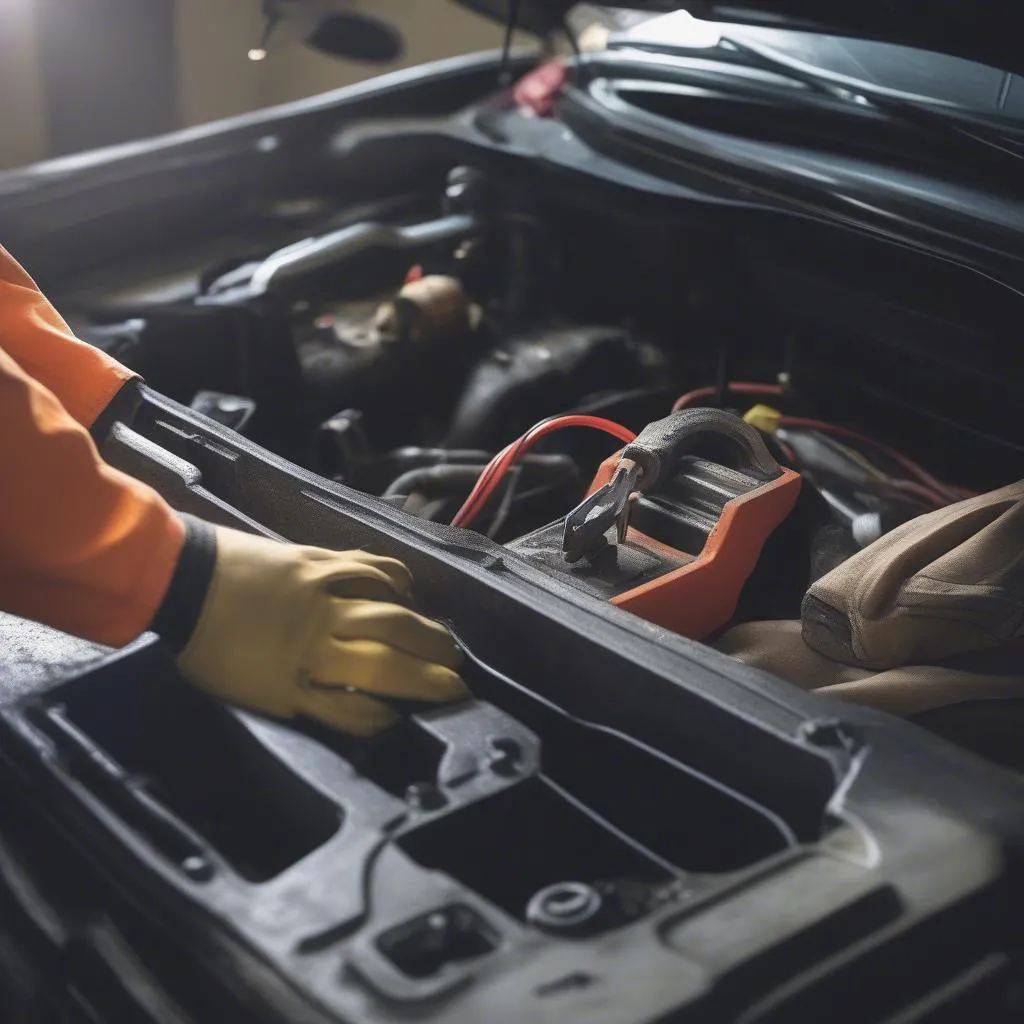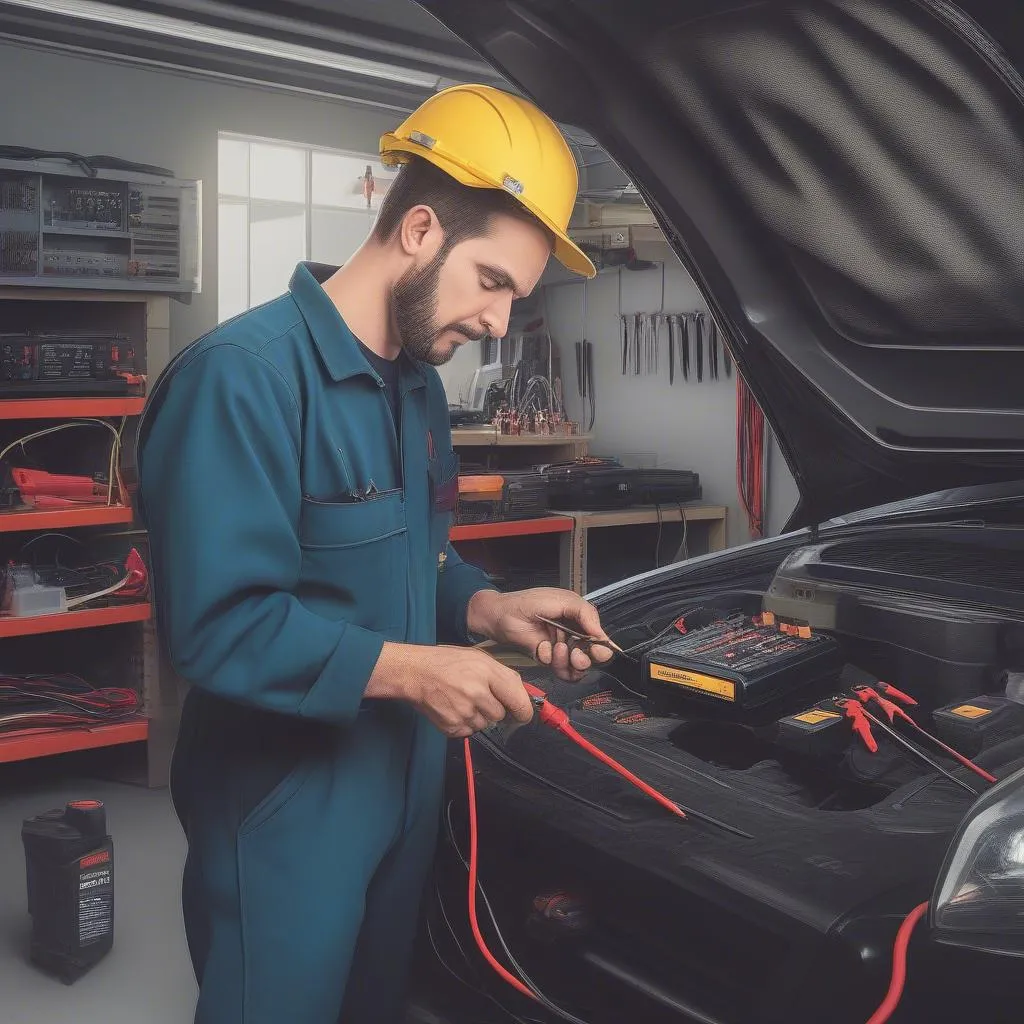Imagine this: You want to drive to work in the morning, but your car won’t start. A quiet “click” from the starter, the dashboard flickers – a classic case of a dead battery. Before you despair, take a deep breath. Replacing a battery is not rocket science and can be done yourself with a little skill. In this article, we will explain step by step how to change your car battery, what to pay attention to, and which mistakes you should absolutely avoid.
Why Is the Car Battery So Important?
The car battery is the heart of your vehicle’s electrical system. It provides the necessary power to start the engine, operate the lights, onboard electronics, and many other functions. If the battery is dead or defective, the entire car will fail.
How Can I Tell If My Car Battery Is Dead?
Besides the classic scenario of the car not starting in the morning, there are other signs of a weak or defective car battery:
- Slow Engine Crank: The starter turns slowly, and the engine takes longer than usual to start.
- Flickering Lights: The headlights, interior lights, or dashboard lights flicker, especially when the engine is running.
- Dashboard Warning Light: Many modern vehicles display a lit battery symbol on the dashboard when the battery voltage is too low.
- Strange Onboard Electronics Behavior: Electric windows, radio, or central locking system only work sporadically or not at all.
- Smell of Rotten Eggs: This smell indicates a deeply discharged battery where battery acid is leaking.
If these signs sound familiar, it’s high time to check your car battery and replace it if necessary.
 Car Battery Replacement
Car Battery Replacement
Step-by-Step Guide to Replacing Your Car Battery
Before you begin replacing the battery, you should make sure you have the correct replacement battery for your vehicle. Information about the right battery can be found in your car’s manual or online.
Required Materials:
- New car battery
- Wrench set (various sizes)
- Safety glasses
- Protective gloves (acid-resistant)
- Possibly penetrating oil
How to Proceed:
- Safety First: Make sure your vehicle is on a level surface, the ignition is off, and the gear is in first (or Park for automatic). Apply the parking brake.
- Disconnect Negative Terminal: Open the hood and locate the battery. First, loosen the bolt on the negative terminal (-) with the wrench and remove the cable. Make sure the cable does not come into contact with the positive terminal.
- Disconnect Positive Terminal: Repeat step 2 for the positive terminal (+).
- Remove the Battery: Loosen the clamp that secures the battery and carefully lift the battery out of the engine compartment.
- Install the New Battery: Insert the new battery in reverse order. Make sure the terminals are connected correctly.
- Connect Positive Terminal: First, attach the cable to the positive terminal (+) and tighten the bolt.
- Connect Negative Terminal: Attach the cable to the negative terminal (-) and tighten the bolt.
- Function Test: Close the hood and start the vehicle. Do all electrical devices work as usual?
Congratulations, you have successfully changed your car battery!
Which Mistakes Should You Avoid When Replacing a Battery?
- Using the Wrong Battery: The new battery must have the same technical specifications as the old one.
- Causing a Short Circuit: When disconnecting and reconnecting the terminals, make sure the positive and negative terminals do not come into contact with each other.
- Connecting the Battery Backwards: Pay attention to the correct polarity (+ and -).
- Working Without Protective Gear: Battery acid is corrosive! Always wear safety glasses and gloves.
 Car Battery Check
Car Battery Check
When Should I Have My Car Battery Replaced by a Professional?
While replacing the battery can generally be done yourself, there are situations where it is advisable to consult a professional:
- You Feel Unsure: If you feel unsure about handling the car battery, you should leave it alone and hire a professional.
- Your Vehicle Has a Start-Stop System: Modern vehicles with start-stop technology require special batteries and a specific procedure for battery replacement.
- The Battery Is Difficult to Access: In some vehicles, the battery is installed in an inconvenient location, making replacement more complicated.
Further Tips Regarding Your Car Battery
- Regular Check: Regularly check the charge level of your battery, especially before long trips or in winter.
- Charge the Battery: A deeply discharged battery can be revived with a charger.
- Properly Dispose of the Battery: Dispose of your old car battery at a recycling center or workshop.
Conclusion: Back on the Road Safely with a Battery Change
Changing a battery is a task that even amateur mechanics can accomplish with some skill. With the right instructions and appropriate safety precautions, nothing stands in the way of a successful battery replacement. If you still feel unsure, do not hesitate to consult a professional.
More Questions About Cars?
On CarAutoRepair.site, you will find numerous other articles and guides on car repair, maintenance, and troubleshooting. Feel free to check it out!
Do you need professional support with your vehicle repair?
Contact us now! Our automotive experts are available 24/7 to assist you.

